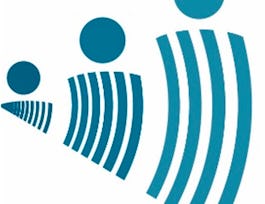Many policies, products, services or processes that we think of as gender-neutral actually have gendered outcomes. Everything from snow plowing to car safety to investment advising to infrastructure investment has impacts that differ by gender. These outcomes can be even more biased if we look at important intersections with race, indigeneity, differences in ability, ethnicity, sexual orientation, and other identities. The question is, what can you do to change this? And, how can you avoid the risks of bias or create innovative new offerings using gender-based insights?



Inclusive Analytic Techniques
This course is part of Gender Analytics: Gender Equity through Inclusive Design Specialization



Instructors: Sarah Kaplan
Sponsored by Syrian Youth Assembly
3,263 already enrolled
(76 reviews)
What you'll learn
Understand legal & ethical frameworks for collecting, storing, analyzing, and disseminating data to reduce vulnerabilities for marginalized people.
Examine how quantitative data is produced, identify gender-related data gaps; & use analytics skills to uncover intersectional gender-based insights
Collaborate with stakeholders to gain an in-depth understanding of unmet needs using community-based and ethnographic research methods
Learn quantitative & qualitative research and analysis techniques; explore how to integrate insights from both types of data to generate insight.
Skills you'll gain
Details to know

Add to your LinkedIn profile
5 assignments
See how employees at top companies are mastering in-demand skills

Build your subject-matter expertise
- Learn new concepts from industry experts
- Gain a foundational understanding of a subject or tool
- Develop job-relevant skills with hands-on projects
- Earn a shareable career certificate


Earn a career certificate
Add this credential to your LinkedIn profile, resume, or CV
Share it on social media and in your performance review

There are 4 modules in this course
When collecting and analyzing data from diverse communities, it is important to recognize that this can create vulnerabilities for marginalized individuals and groups. In this module, you will learn about the legal frameworks and ethical requirements related to collecting, storing, analyzing, and disseminating data, paying attention to different country contexts. By the end of the week, you will understand potential risks to research participants and find ways to mitigate such risks and appropriately compensate them for their time and efforts in the data collection and design process. These considerations are important to take into account before you move forward with any data collection and analysis projects.
What's included
6 videos4 readings1 assignment2 discussion prompts
This session will review basic principles of quantitative data analysis, including probability and hypothesis testing, through fun examples and exercises. By the end of the week, you will be able to conduct basic calculations to analyze quantitative data and develop the intuition behind statistical inference and hypothesis testing to understand analytical reports generated by others.
What's included
8 videos3 readings1 assignment
This week, we will shed light on how data is produced and how to uncover gender-based insights from data. By the end of the week, you will understand the data generation process, know where to locate sources of gender-disaggregated data, and analyze relationships to interpret results. You will see how emerging insights from gender-disaggregated data analysis can shape the evolution of the problem statement and identify areas for further data collection.
What's included
7 videos2 assignments
A big part of applying a gender lens to data analysis is obtaining different perspectives, especially from underrepresented groups. One way to do this is through qualitative research in the communities of interest. This week, you will explore the art of meaningful community engagement. By the end of this week, you will have a better understanding of the concept and value of community engagement as a qualitative data source. You will learn the steps to collect and analyze qualitative data to gain insight into people’s emotions, motivations, aspirations, and pain points. You will also learn how engage responsibly with vulnerable or marginalized communities.
What's included
12 videos3 readings1 assignment
Instructors

Offered by
Why people choose Coursera for their career




Learner reviews
76 reviews
- 5 stars
84.21%
- 4 stars
14.47%
- 3 stars
0%
- 2 stars
0%
- 1 star
1.31%
Showing 3 of 76
Reviewed on Dec 28, 2020
I have a fear of maths, but this course and the professor were extremely engaging and it was a lot of fun to study and come out of this course with great insights
Reviewed on Feb 2, 2023
The course provided many technical details on quantitative analysis in a simplied manner with practical examples.
Reviewed on Jul 21, 2021
This course highlights the quantitative and qualitative techniques required for topics discussed in the 1st of the 5 modules. It an incredible course. And a must do for all others.
Recommended if you're interested in Business

Johns Hopkins University

Johns Hopkins University

University of Western Australia

Open new doors with Coursera Plus
Unlimited access to 10,000+ world-class courses, hands-on projects, and job-ready certificate programs - all included in your subscription
Advance your career with an online degree
Earn a degree from world-class universities - 100% online
Join over 3,400 global companies that choose Coursera for Business
Upskill your employees to excel in the digital economy




